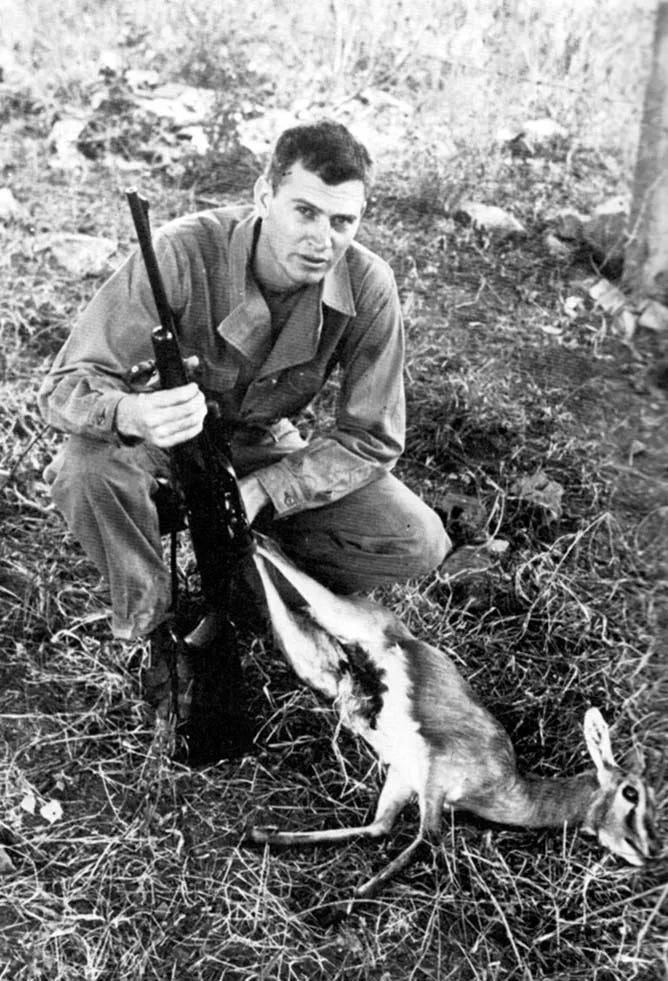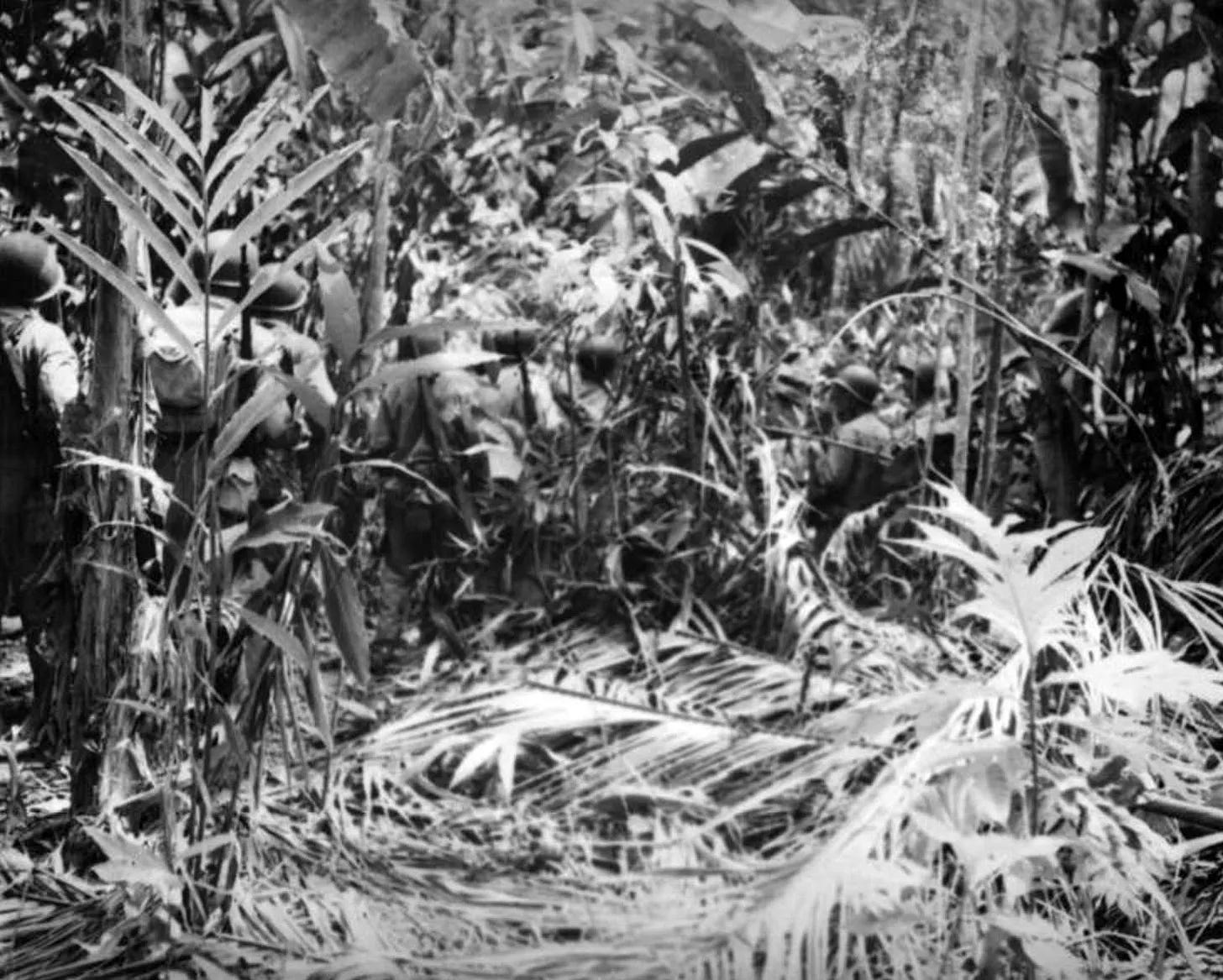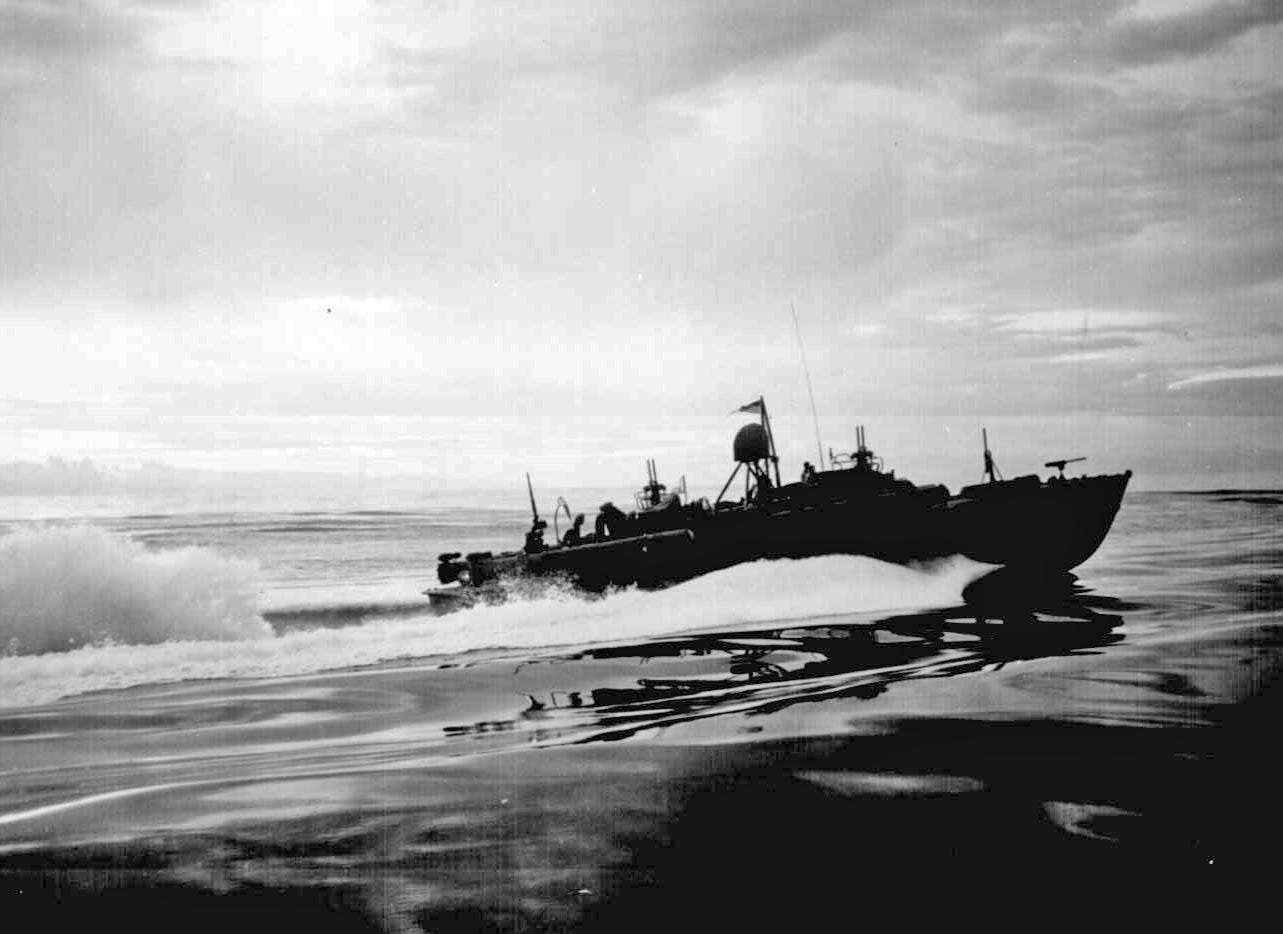Guadalcanal and the surrounding seas
Part 2 of a roundup of stories relating to Guadalcanal - and the land, sea and air battles in the Pacific War of late 1942 and early 1943
13th November 1942: Naval Battle of Guadalcanal - In a enormously destructive encounter both sides suffer ship losses - but the US Navy decisively ends the Japanese threat to Guadalcanal

Rear Admiral Callaghan with ingenious tactical skill and superb coordination of the units under his command, led his forces into battle against tremendous odds, thereby contributing decisively to the rout of a powerful invasion fleet and to the consequent frustration of a formidable Japanese offensive.
23rd November 1942: Navajo code talkers join the Marines - As the struggle for Guadalcanal continues US forces are helped by Native Americans within their ranks
One of the characteristics of the Navajo language was its oral tradition. The men were accustomed to remembering quite long and detailed instructions rather than writing them down. This was to be an important aspect of the Navajo Code talkers’ work in addition to the fact that their communications were impenetrable to the Japanese.
30th November 1942: The Battle of Tassafaronga - Another Naval clash off Guadalcanal - disaster for the US Navy as they fail to hit Japanese ships and are surprised by the response

Pitching a US force of five cruisers and six destroyers against eight Japanese destroyers should have given the US Navy a considerable advantage.
But in this action, when the Japanese realised they were under attack, they were able to swiftly respond. Their Long Lance torpedoes were very effective and did terrible damage to the US ships. They had an extremely long effective range - which surprised the US ships who had assumed they were safe from torpedo attack.
4th December 1942: Guadalcanal - 'Carlson's Raiders' return - The 2nd Marine Raider Battalion returns from the legendary 'Long Patrol' - one of the first US "Special Forces' operation
He produced a highly motivated, high-morale unit of men with this approach. The 2nd Marine Raider Battalion was undoubtedly also influenced by his charismatic leadership. Other Marine units looked on and began to regard the “Gung-Ho” method as a term for an overzealous enthusiasm for combat. Later another officer would acknowledge that Carlson “may be Red, but he isn’t yellow” - he led from the front and shared the dangers and privations of his men.
14th December 1942: Guadalcanal Marines receive their orders - The First Marine Division get news that they are moving out - to prepare for another attack
Runner had malaria, Brick barely stirred from the pit except at night, Hoosier and Oakstump were subject to long periods of depression, Red had long since left us, I had dysentery, Chckler was irritable—all of us were emaciated and weakened beyond measure.
5th January 1943: USAAF General dies defying orders - General Kenneth Walker awarded posthumous Medal of Honor for leading daylight attack on one of the most heavily defended targets in the Pacific
On January 5th of 1943, I was on one of what most of us thought was a suicide mission ... The Japanese were getting ready to mount a large expeditionary force to relieve their garrisons on New Guinea, and Brigadier General Walker, who was the commanding general of the V Bomber Command there, was flying in the lead ship, and I was flying on his wing.
22nd January 1943: Duelling a sniper on Guadalcanal - A young US Army officer describes jungle warfare during the final battles to clear out the Japanese from the island

While I was down on the ground, wincing and holding my ear, a group of Japs blundered into our left flank and more firing began. I had a rough idea of where the Japanese who shot at me was lurking, and as soon as my ear stopped killing me I started looking for him with the thought of shooting him in the belly so that he would die slowly.
25th January 1943: Joe Foss's last flight over Guadalcanal - The last day for 'Foss's Flying Circus' - the record breaking 'ace of aces', soon to be awarded the Medal of Honor

His remarkable flying skill, inspiring leadership, and indomitable fighting spirit were distinctive factors in the defense of strategic American positions on Guadalcanal.
9th February 1943: Japanese withdraw from Guadalcanal
The destroyers were all gone. They’d had to leave in a hurry as it got light, because they were worried about getting attacked and sunk by our airplanes. As we got there, we saw many Japanese in the water. The destroyers just left them behind, left them floating there in the water.
I picked up thirteen of them and sat them up on the bow of my boat, and we took them back to Tulagi. I thought it was sensible, that maybe we’d be successful in getting information from them, but the Marines were mad as hell when I got them there.






